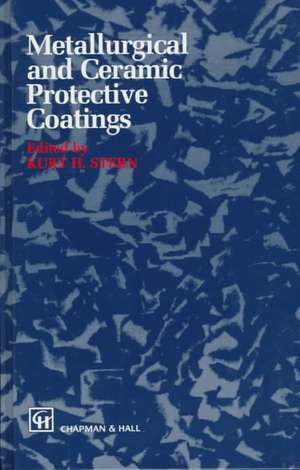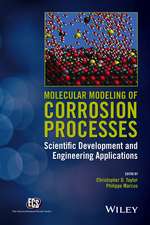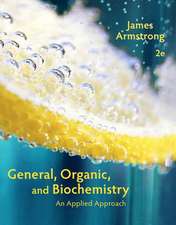Metallurgical and Ceramic Protective Coatings
Editat de K.H. Sternen Limba Engleză Hardback – 31 aug 1996
| Toate formatele și edițiile | Preț | Express |
|---|---|---|
| Paperback (1) | 1219.63 lei 6-8 săpt. | |
| SPRINGER NETHERLANDS – 20 sep 2011 | 1219.63 lei 6-8 săpt. | |
| Hardback (1) | 1225.62 lei 6-8 săpt. | |
| SPRINGER NETHERLANDS – 31 aug 1996 | 1225.62 lei 6-8 săpt. |
Preț: 1225.62 lei
Preț vechi: 1494.66 lei
-18% Nou
Puncte Express: 1838
Preț estimativ în valută:
234.58€ • 241.75$ • 198.04£
234.58€ • 241.75$ • 198.04£
Carte tipărită la comandă
Livrare economică 01-15 martie
Preluare comenzi: 021 569.72.76
Specificații
ISBN-13: 9780412544408
ISBN-10: 0412544407
Pagini: 342
Ilustrații: XIV, 342 p.
Dimensiuni: 155 x 235 x 21 mm
Greutate: 0.67 kg
Ediția:1996
Editura: SPRINGER NETHERLANDS
Colecția Springer
Locul publicării:Dordrecht, Netherlands
ISBN-10: 0412544407
Pagini: 342
Ilustrații: XIV, 342 p.
Dimensiuni: 155 x 235 x 21 mm
Greutate: 0.67 kg
Ediția:1996
Editura: SPRINGER NETHERLANDS
Colecția Springer
Locul publicării:Dordrecht, Netherlands
Public țintă
ResearchCuprins
1 Introduction.- 1.1 Protective coatings.- 1.2 Stresses.- 1.3 Selection of coating materials.- 1.4 Methods of application.- 1.5 Electroplating — an example of a technology.- 1.6 Plan of this book.- References.- 2 Electrodeposition of refractory metals from molten salts.- 2.1 Introduction.- 2.2 Experimental techniques.- 2.3 The refractory metals.- References.- 3 Metalliding.- 3.1 Introduction.- 3.2 The metalliding process.- 3.3 Properties of metallided layers.- 3.4 Individual metalliders.- 3.5 Conclusions.- References.- 4 Electrodeposition of refractory compounds from molten salts — borides, carbides and suicides.- 4.1 Introduction.- 4.2 Methodology.- 4.3 Boron and the borides.- 4.4 Silicon and the silicides.- 4.5 Carbon and the carbides.- 4.6 Conclusions.- References.- 5 Laser assisted surface coatings.- 5.1 Laser surface alloying.- 5.2 Laser surface cladding.- 5.3 Laser chemical vapor deposition (LCVD).- References.- 6 Sol-gel derived ceramic films — fundamentals and applications.- 6.1 Introduction.- 6.2 Sol-gel chemistry.- 6.3 Deposition by dip-coating.- 6.4 Deposition by spin-coating.- 6.5 Effects of entrained condensed phases.- 6.6 Drying of films.- 6.7 Control of film microstructure.- 6.8 Applications.- 6.9 Summary 148 Acknowledgments.- References.- 7 Solid phase cladding.- 7.1 Introduction.- 7.2 Explosive cladding.- 7.3 Roll bonding.- 7.4 Friction surfacing.- 7.5 Resistance cladding.- 7.6 Hot isostatic pressing.- 7.7 Summary 191 References.- 8 Thermal barrier coatings.- 8.1 Introduction.- 8.2 Material requirements.- 8.3 Stabilization of zirconia.- 8.4 Phase transformation reactions of stabilized zirconia.- 8.5 Identification of phases in stabilized zirconia.- 8.6 Zirconia thermal barrier coatings.- 8.7 Causes for failure of zirconia TBCs.- 8.8 Alleviation ofTBC hot corrosion.- 8.9 Future uses and trends for zirconia TBCs.- References.- 9 Pack cementation diffusion coatings.- 9.1 Principles and history.- 9.2 Range of applicability.- 9.3 Technical aspects.- 9.4 Possibilities for improvement.- 9.5 Summary 257 Acknowledgments.- References.- 10 Thermal spray coatings.- 10.1 Introduction.- 10.2 Thermal spray processes.- 10.3 Feed materials.- 10.4 Particle-plasma interaction and process control.- 10.5 Deposit formation dynamics.- 10.6 Materials science of thermal spray deposits.- 10.7 Thermal spray coating applications.- 10.8 Thermal spray and advanced manufacturing.- 10.9 Summary.- References.- 11 Degradation of coatings by high temperature atmospheric corrosion and molten salt deposits.- 11.1 Introduction.- 11.2 Metallic coatings.- 11.3 Ceramic coatings.- 11.4 Erosion 303 References.- 12 Measurement of coating adhesion.- 12.1 Introduction.- 12.2 Surface engineering.- 12.3 The requirements of an ideal adhesion test.- 12.4 Methods of adhesion evaluation.- 12.5 Summary.- References.
Recenzii
The presentation of the book is excellent....it can be recommended to research and production engineers alike, materials scientists, solid-state and colloidal chemists, and physicists as well as design engineers and plant managers who want to find the most economical method to protect metal surfaces from environmental impacts. - Euromaterials (Sept 97)






